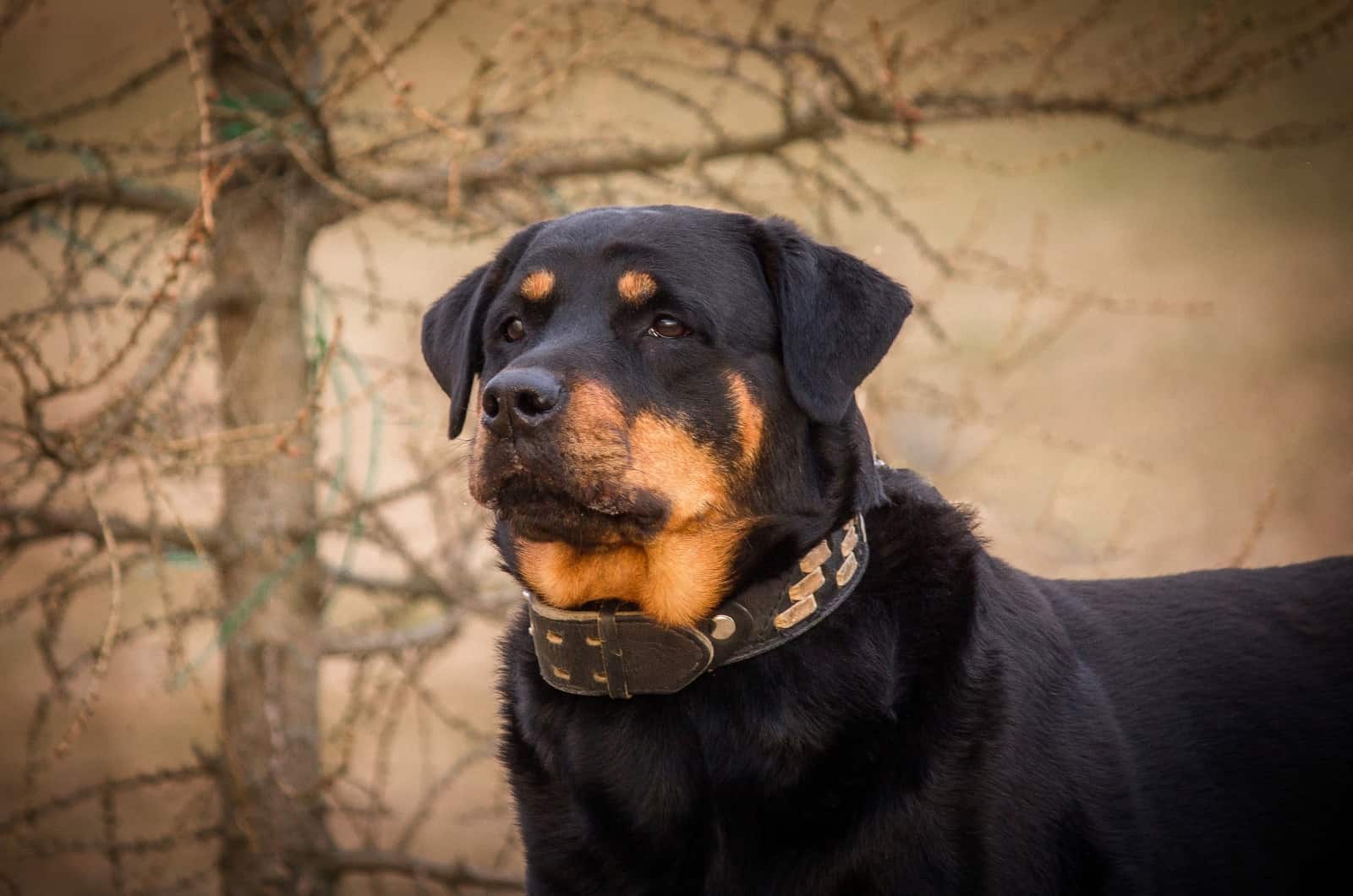Dog training is a tough thing for first time dog owners, or those who have had dogs their entire life but never really got into training their own canine. Misinformation on should you use shock collars on Rottweilers can be found all over the internet.
With so many advocates of using only harnesses or fabric and leather leashes while walking your dog, the shock collar gets a really bad rep due to assumptions by people who never even tried it.
So, what exactly is this misinformation I am talking about, and what is actual truth? Here is everything you need to know about the dreaded shock collar and its use for the Rottweiler breed.
In The Right Hands, Shock Collars Are Excellent Tools To Correct Your Rottweiler
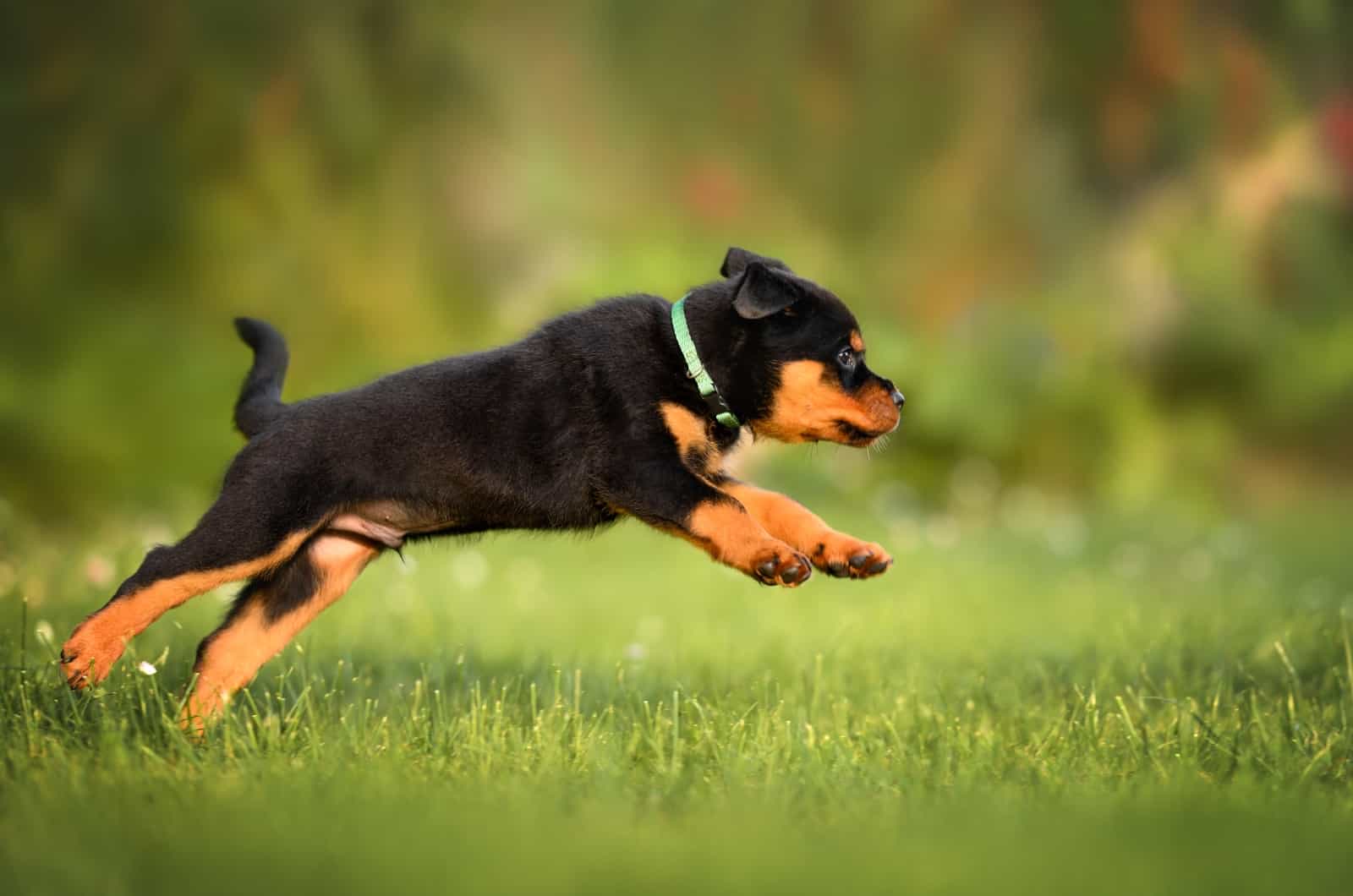
I am sure you already have an opinion on the matter, despite never trying it on your own Rottweiler or seeing a good dog trainer use it properly. Having trained hundreds of dogs in my lifetime, the shock collar was indispensable for some dogs, regardless of breed.
The name “shock collar” is not truly representative of what this tool actually is. Nothing shocks a dog wearing the collar. Instead, the low level static electricity produces a sensation similar to you flicking your dog’s neck hair.
Most people think of this tool as a taser or a stun baton. However, it is nothing more than a distraction for the dog. Vibration collars are very similar. The technology they rely on is a vibration motor instead of a static charge in the shock collar.
Nowadays, both the shock collar and vibration collar can be fine tuned to infinity. There are tens or even more than a hundred intensity levels made for owners to find the ideal strength of the collar for their dog.
Rottweilers are muscular dogs with great self-confidence and can be stubborn. When a puppy is not introduced to obedience training early on, problems become much more difficult to solve once the Rottie is an adult dog.
Rampaging, disobedient Rottweilers in a home with kids represent a real danger. A bad habit that most owners of this and other similar dog breeds have is inconsistency in training. Obedience training cannot be taught and then used occasionally.
This is why dog trainers have their work cut out for them when owners start bringing dogs that know no rules or boundaries. Neutering your Rottweiler can somewhat help with aggressive behavior but will not eliminate it completely.
When Should You Use Shock Collars On A Rottweiler?
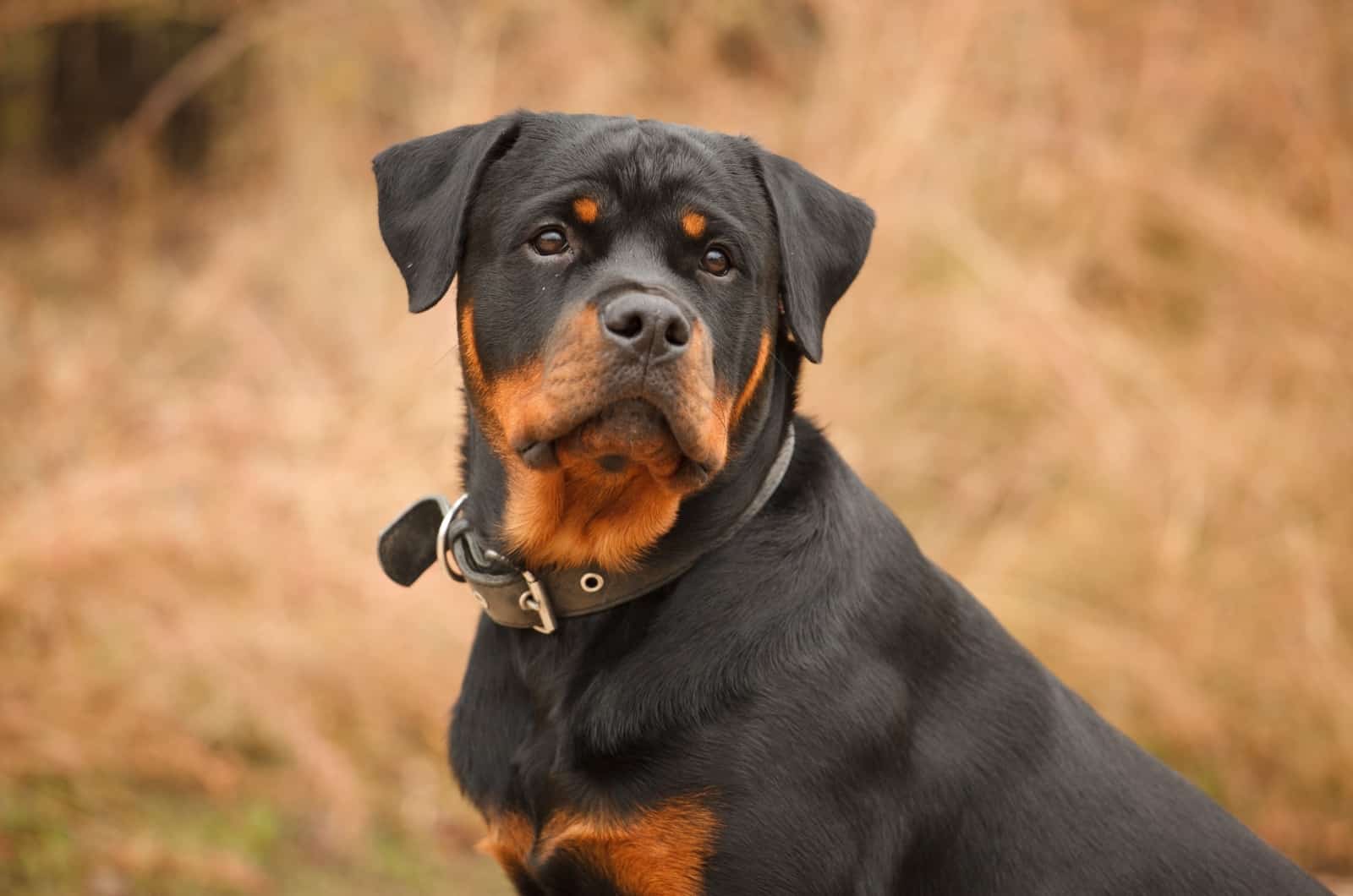
I come across many large dog breeds that have really strong willpower. You have heard that positive reinforcement is the best thing since sliced bread, but for really stubborn Rottweilers, Boxers, Cani Corsi, etc., food and toys become irrelevant once their attention is gone.
No matter how tasty the food is or fun playing tug-of-war is, a Rottweiler that decided it had enough training will simply refuse to cooperate and try doing its own thing. For dog trainers it is easier to correct this unruly behavior because they have different tools available at their disposal.
However, dog owners are kind of poop out of luck if they do not have a pronged, shock, or vibration collar but do have a one hundred thirty pound heavy Rottweiler at home. If you are unsure about your Rottweiler being aggressive, read our article describing the 3 main signs.
While redirection and correction are staples of dog training, you should not use collars all the time. If your dog is aggressive during walks and loves to prey down other dogs, people, or things with wheels, a shock or vibration collar is the ideal solution.
The collar’s working principle is simple. You press the button, and the little nudge the collar produces redirects the Rottweiler’s attention from whatever it was fixating on, to you. However, using the collar after the undesired behavior happens is useless.
Simply pressing the button when you think is the right moment can create an even worse reaction in the dog. You have to read your dog’s body language. With a large breed such as the Rottie, it is fairly easy to determine what state of mind it is in.
Let us see what kinds of behavior can be avoided with the shock collar, and how to use it to get the desired results out of your Rottweiler. Do not forget to choose one of these top ten collars for Rotties once the behavior is fixed.
This Behavior Is An Opportunity To Use A Shock Collar On Your Rottweiler
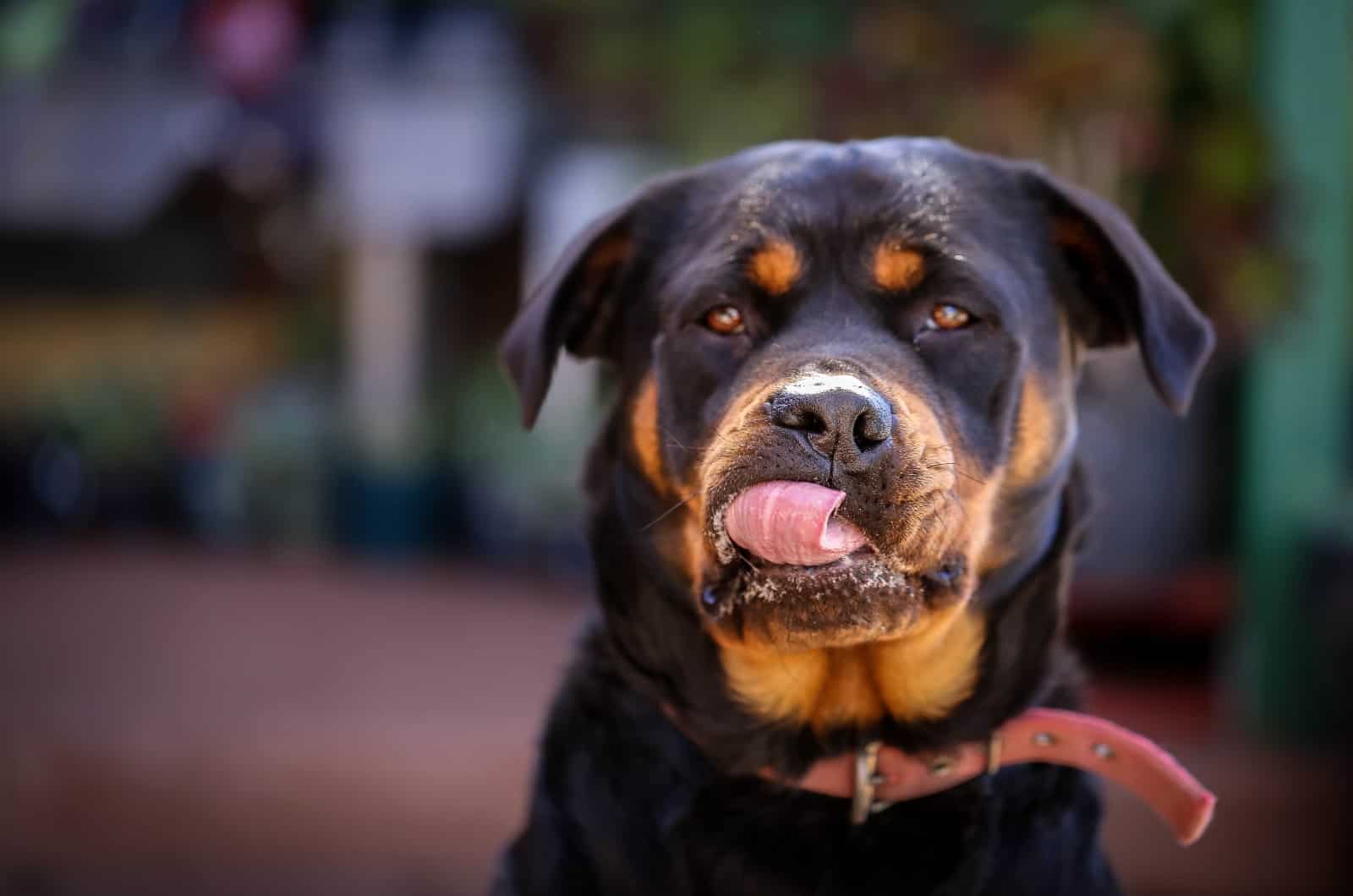
A common scenario in which vibration and shock collars show their value is when your Rottie is pulling the leash and lunging at animals or people. This behavior is deeply instilled, and is frequent with dogs who believe their owners require constant protection.
Dog owners should be the ones providing protection to dogs, so the reversal of roles gives the Rottweiler the pack leader status. In such a state of mind, the dog is in a “fight or flight” mode, which means food, toys, commands and trying to overpower it will not work.
This is where the vibration or shock collar come into play. A small impulse that mimics a flick or a touch will redirect the dog’s focus onto you. Dogs use their mouths to correct undesired behavior in other dogs, and a light touch on the neck or lower ribs does the trick.
While we can use our hands or legs to touch the same areas, it would require a dog owner to keep the dog super-tight to their leg. While this is an unrealistic scenario, it is not impossible.
Despite the shock collar being a godsend for head-strong Rotties, it is useless if you cannot understand what the dog’s tail, eyes, ears, and mouth are telling you prior to the incident. If your Rottie is growling at you, it is best to seek a behaviorist’s or dog trainer’s help.
Should You Use Shock Collars On Rottweilers, Do It At This Exact Moment

Assuming you already put the collar on your Rottweiler, make sure the dog is in a relaxed state before going on a walk. If it gets excited by the prospect of going out, then try putting the leash on the dog and let it relax in the crate.
Once you are walking, make sure you are not causing the unwanted behavior by pulling the leash preemptively. Pulling in the opposite direction will stimulate the dog to go into a combative state of mind.
Avoid using harnesses with a dog that pulls a lot or exhibits aggressive behavior. A harness is great when you want your dog to pull a sled, cart, or the likes. However, for walking, it is just a spark for offense. Are Rottweilers dangerous? If they retain these bad habits, yes.
If you notice your dog going from a relaxed or inquisitive state to a more fixated, tense mode, press the shock collar button as soon as the behavior changes. You will notice your dog will be confused about what just happened.
Essentially, you are teaching the dog that those behaviors are followed by a random nudge. It is not hurting the dog, but simply snapping it out of the fixated targeting mode. Do this every time the body signs change from “walking my way downtown” to “target acquired”.
You will be surprised how quickly this will yield results. Make sure you adjust the strength of the shock impulse according to your dog’s sensitivity. Some dogs require a more intense poke, while others react well to the lowest setting.
Here are the main body language signs your Rottweiler will give when switching states of mind. As the owner, you should know your dog best, so learn to correctly interpret the behavior by paying attention to your dog instead of anticipating the target.
Tail Position

A tail that is held high and quickly swiping left to right can indicate a state of excitement or confrontation. A completely still tail held high is a definite sign of being on the offense.
Rotties with docked tails can be harder to read due to the lack of length in the tail, but look for very fast movement and an upright tail position. For more information on reading the signs a tail gives, take a look at our dog tail positions chart.
The natural, relaxed state of a Rottweiler’s tail is straight or parallel to the ground. Wide and slow swipes to the right and left usually mean that a person to their liking is approaching.
Ear Position
Being a breed with hanging ears, the Rottweiler is fairly easy to read when it comes to ear positions. An alert ear will see the dog slightly raise the flaps in a way that the fold appears to be at the middle of the outer ear.
Although it can mean several different things, it is usually excitement or preparation for a fight. Keep in mind that these interpretations of body part positions are in the context of a dog with problematic behavior.
We have an article with a general overview of dog ear positions and how to interpret them. It is a quick read but very important in getting a good read of your dog’s state of mind.
Overall Body Posture
This is perhaps the most telling sign of a dog that is ready to lunge. If the body is stiff, leaned forward, and very tense to the point of looking like a statue, it is clear the dog is trying to appear larger to intimidate people or other animals.
Even if you notice the body shaking, it can be signaling a state of fixation that is ready to escalate into aggression. However, shaking out of excitement is not a trademark of the breed, but it is useful to know in case your dog shows this behavior.
The Eyes
You can tell by the eyes and general facial expression alone in what state of mind the dog is. A dilated pupil with a gaze fixated on the target is definitely a precursor to aggressive behavior.
A Rottie that “tracks” its target with the eyes and has a stiff body with a high held tail is one hundred percent going to do something about the challenge it is put against. The breed is known for being fearless, so let us see what the perfect moment to use a shock collar is.
Summary
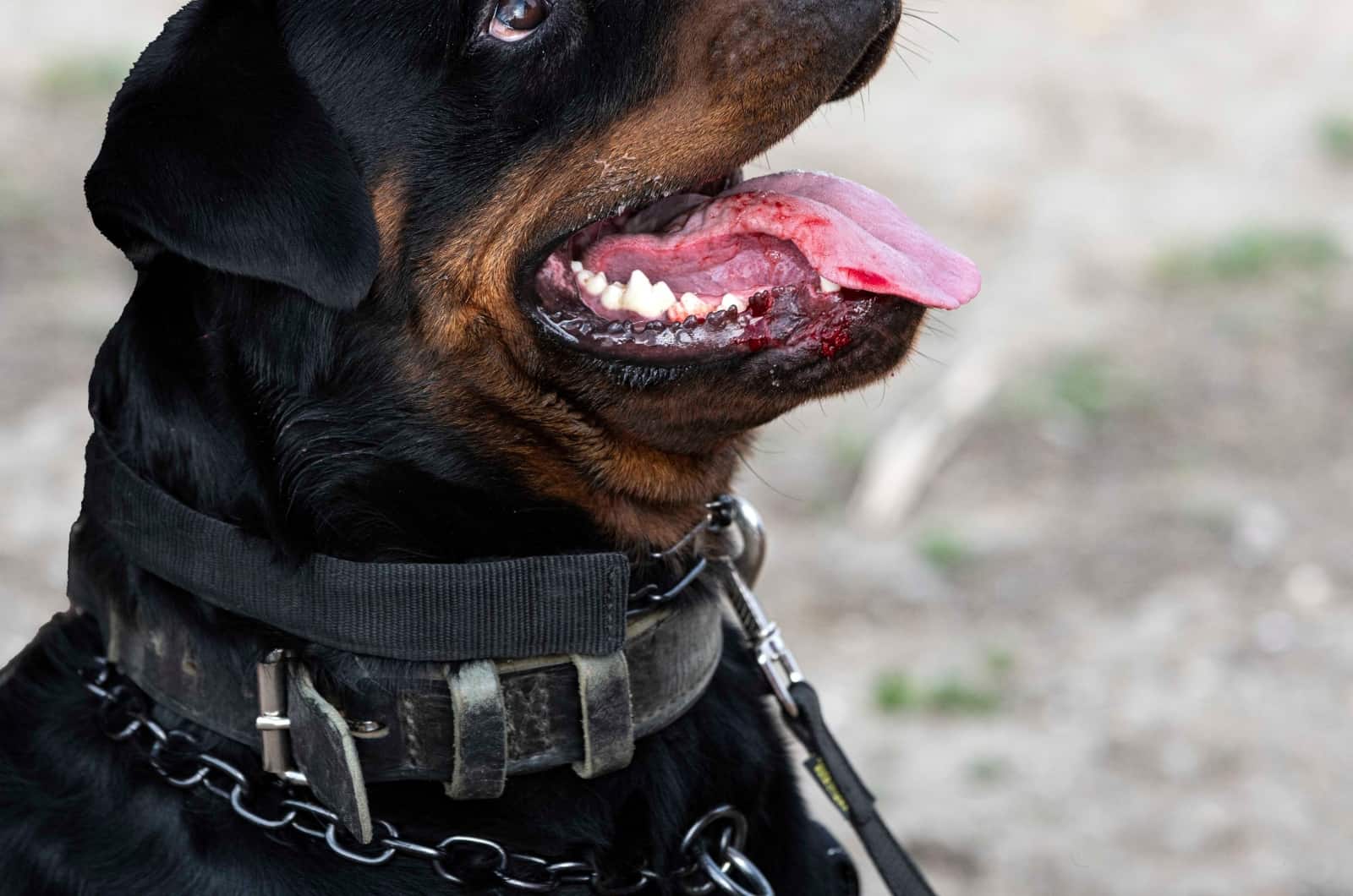
Should you use shock collars on Rottweilers? Definitely. If you are unsure about figuring it out by yourself, go to an experienced dog trainer who will teach you how to read the dog, when to act, and when to use the shock collar.
Another thing you can do is look at some YouTube videos of reputable trainers who showcase instant results on dogs even larger and more aggressive than Rottweilers. I am certain you will find a solution for your dog’s behavior. The most important thing is to not lose hope.
